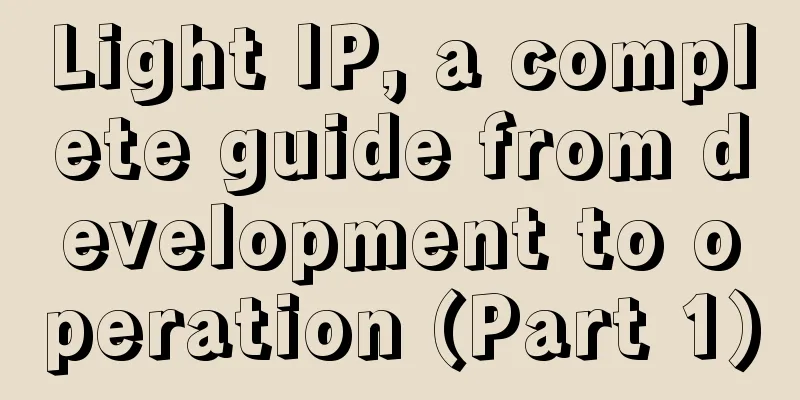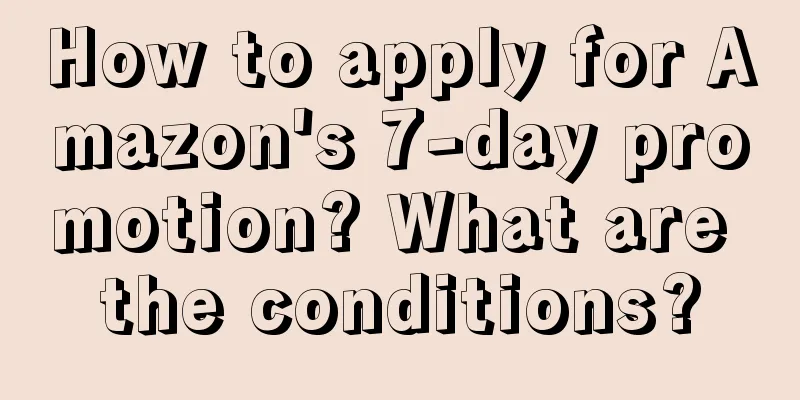What’s missing from “daddy-flavored” articles?

Have you ever read something like this? Like: "Don't waste time on trivial matters, time is precious and once gone, you can never get it back"; or, "Remember, there is no free lunch in the world. If you want something, you have to work hard for it." In the final analysis, the problem with the article is not that the author cannot write, but that the article has a "daddy flavor"; what is a daddy flavor? He thinks he knows a lot, likes to preach, and does not explain some experiences clearly. Looking back at the articles I wrote before, there are similar situations. How to get rid of the fatherly taste and make the other party feel that we are communicating on an equal footing? Others will say that you should express more emotions, replace "you" with "we", etc. In fact, there is something that is overlooked in the middle. 01What is ignored? Let's take a look at a three-dimensional perspective: For example: I was feeling a little sleepy at three o'clock in the afternoon, so I went downstairs to have a cup of coffee and happened to meet my boss. He talked to you about some recent hot marketing cases, such as how Cadillac and Xiaomi used some contrasting techniques to become topics. The leader suggested that we should also explore the product features and create a marketing event. You guys were chatting enthusiastically like you were brainstorming, and the atmosphere was relaxed and energetic. After the chat, the leader suddenly said, "Xiao Wang, go up and organize what we said and write it down. It would be best if it is expressive and expressive." You readily said that you could finish it in half an hour. As a result, you are dumbfounded when you look at the computer. Oh my god, how can you organize the output of your boss? Where should you start? You simply don't know where to start. You complain about making trouble while thinking about how to do it, feeling anxious. In fact, translating spoken language into written language is like squeezing a beautiful scene into a piece of paper. The question is, how can words describe the sound, breeze, and smell? Let's see how the painter solves this problem: They created two perspective methods. Drawing distant objects small is called linear perspective, while drawing nearby objects thick and clear is called aerial perspective. By combining the two methods, painters successfully constructed a three-dimensional world on a two-dimensional plane. The same is true for writing. Except for basic symbols (question mark, exclamation mark...), words cannot directly express emotions and logical relationships. For example, a simple "what?" can make a world of difference. Think about it, if I put a question mark after "what", it becomes "what"? Does it look like asking a question? If I put brackets around "what", does it look like someone is thinking something in their mind? If I replace it with a comma, does it look different? ... The same word, with different emotional backgrounds, has completely different meanings; if the person speaking is right in front of you, you can clearly hear the other person's voice, see the facial expression, and understand the meaning. A conversation starts with incomplete information, which should be completed by the sound and facial expressions. In reality, you can experience this well by recording a daily conversation and then converting it into text. How can we express all the information originally carried by sounds, dialogues, and facial expressions in writing? Should we use more emotional expressions, symbols, or color annotations? My answer is a little different. To put a conversation into text, in addition to retelling what was said, it is also necessary to construct the scene in which the conversation took place so that the reader can reconstruct the scene in his or her mind. This is like the perspective used by painters. We use logic and context to make words transcend their own limitations and reproduce the richness and multi-dimensionality of communication as much as possible. Therefore, if the article has no logical relationship, readers will naturally feel that it cannot stand up to scrutiny. 02What is logic? Simply put: everything you say makes sense. When building blocks, each block must be placed in the right place; when weaving a story, each plot must flow smoothly; when solving a problem, each step must be clearly organized. But have you ever thought that those facts, real cases, and historical records that are beyond doubt in the eyes of everyone have become what we call "truths" over time. Systematic elaboration of thoughts and subjective feelings is the process of discussion; the work discussions and speech discussions we usually see are essentially the personal expressions of the writer, intended to express "what I think". So, what elements should a complete discussion include?
All three points are necessary. The so-called proposition is what you want to say, what you want to convey, what point of view you want others to know, and even why you agree to do it; it is part of the conclusion, and there is no absolute right or wrong in terms of morality and ethics. Even outrageous arguments can be argued logically, which is why every debate has both sides. What is the reason? To support your point of view, you must have some basis, such as your experience, observation, fact-based evidence, etc., to support your persuasiveness. For example, if I propose that all companies should implement the "three-day off" policy, you will definitely want me to say "because... so..." before you will consider whether to support me. If there is no reason to advocate, it can only be called a sudden thought. Only when the article enters the "why" level can it advocate and become a "theory" link. Facts are responsible for supporting claims and reasons. You may say: I already have reasons, why do I need facts? Without facts, people will think I am justifying myself and am self-righteous. You know, when I explain my thoughts and why I think so, I am still stating my personal subjective level. You are the boss, and I say, "All companies should implement 'three days off' because individuals work too long every day." Can you accept this reason? Definitely not. what to do? In order to prove that I am not talking nonsense, I can only introduce some objective data for comparison, such as the comparison of working hours and paid vacation utilization rates with other developed countries. So, you will feel that it is necessary to think about it. From the reader's perspective, the reason for your claim is a personal subjective opinion, your personal idea; however, after adding objective facts, it is no longer a simple subjective opinion, but an opinion that is supported by certain arguments and is worthy of consideration. After stating the reasons and facts, you can also give a "conclusion" that deepens your claim. This is the complete triple structure, just like a painter's three-dimensional perspective, seeing through the entire three-dimensional picture. After understanding these, it is not difficult to find that most of the daddy-style articles lack a certain part in the triple structure. They may have conclusions and personal reasons, but lack factual support. Or they only have opinions and facts, but lack the development of personal experience (reasons). 03However, if an article is too rigorous, it can also tire the reader. Everyone will think: You have been talking about reason all the time, and what you said is all right, using one reason to support another reason; or the listing of all the information is like preaching, which is meaningless... Yes, this kind of article is very solid and there is no loophole for any loopholes to slip in, but I think that being flawless is actually a disadvantage. Why? It can be understood this way, just like the difference between "persuasion" and "convince". When shopping on e-commerce platforms, the anchors will take out a lot of monitoring reports to prove that their goose down jackets are very good. The subtext is telling you to buy it because they have complete qualifications and are safe. This is persuasion. What about conviction? The anchor said nothing, but took apart a down jacket and cut it with a blade, and the goose feathers flew all over the floor. You saw with your own eyes that there was so much down in a "piece of cloth". This is conviction. Some people believe that the more rigorous the logic of an article, the more persuasive it is. In fact, if an article only uses “because...so...” for logical deduction, readers will feel that they are being forcibly indoctrinated. This aversion does not mean that they disagree with the author’s point of view, but that they do not like the author’s use of logic to force his or her own ideas. Newton's Third Law of Motion, also called "Action and Reaction," states that when two objects interact, the force exerted by one on the other is equal to and opposite to the force exerted by the other on the first. People also respect certain actions and reactions in their hearts. Regardless of whether your arguments or logic are correct, if you try to persuade others with too much force, they will resist you with the same force. This is an instinctive reaction, just like being pushed back. How to guide readers to agree, or how to make them feel inspired without sounding too pedantic? Comparing the above, it is not difficult to see that it depends on "convincing". How to do this? We have to rethink the relationship between content and persuasion. If you write a paper, your goal is to propose and prove a "conclusion"; when writing interviews and essays, although you will not come to any formal "conclusion", you will at least provide some insights and discoveries related to the topic. I use the word "topic" to deeply understand the meaning of the theme. The article can be seen as the process of exploring a "topic". When the topic is determined, you will clarify the topic you want to write about, and after various discussions and developments, you will finally solve and draw a conclusion. There is a problem here. No matter how brilliant the argument is or how eye-catching the conclusion is, sometimes it is still difficult for readers to be truly "convinced". Just like this article, it is not enough to just "determine the topic" and "solve the problem", there is also a hint of "persuasion" in it. Therefore, the writer proposes the topic for his own convenience, without giving the readers enough background information, which makes the readers think, "What does it have to do with me?" Therefore, in order to bring readers closer to ourselves, we must find "shared topics". Sharing means creating a situation to let everyone know that the problem I am going to talk about next is also related to you. Only with this step will the other party participate and lay the foundation for conviction. It sounds theoretical, but the structure is simple. The main steps to advance are: ①Confirm the topic ②Shared topics ③Solving the problem This is the same as our daily conversations. When a few people sit together and drink coffee, you can't understand what others are saying. It's not that the topic is boring, but the lack of sharing the topic makes people feel confused and bored. 04How can we share topics so that we can participate in thinking and discussion? 1. Ask questions and keep sentences shortEnglish expressions usually follow the SVO sentence pattern, which starts with the subject and directly states who is doing what. This makes it easier to directly and sharply raise questions and bring up topics. For example: I (S) read (V) a report (V), and suddenly I was no longer anxious; Alibaba (S) released (V) financial report (O), and I felt that the data was not impressive. In today's world of scarce attention, readers don't have the patience to fully understand your intentions. State the conclusion first to help quickly capture their attention and help them understand the logic behind it. If you don't believe me, take a look at how Chinese people like to express themselves: The latest consumer survey results show that in the face of ever-increasing and diversified demands, brands need to adopt more personalized and innovative marketing strategies to attract target customers. Therefore, we plan to launch a new customized product line in the next quarter to meet market demand. Is it too wordy and you want to give up halfway through? Writing instructors often tell us to "simplify sentences," but few people explain why we should do so. In fact, keeping the subject and verb closer together can make sentences easier to understand. Regardless of whether the article is interesting or not, it is at least very logical. The topic is mentioned right at the beginning, so you won't feel confused. 2. Expand your discussion and draw on readers’ materialWhen narrating an article, we often use the three-paragraph method, explanatory method, narrative method, induction and deduction; they are indeed very practical, but sometimes they seem mechanical and not real enough. Take the three-paragraph structure for example. The point is given directly at the beginning, then several reasons are used to support it, and finally a summary is made. The other methods are similar. It looks full of logic, as if trying to convince the reader. What is thinking? To stand on the same side as the readers and to collect materials for them. If your readers are management or bosses, try to understand their experiences and feelings, and how they make judgments when faced with problems. The material can be entertaining, situational, or professional. Once you write down a sentence or a certain understanding of his, the other party will feel that this part touched me and is very realistic. The more you respect the subject of the material, the more serious the response you will get. I have read many articles about "side jobs" that start by teaching people what you should do. These articles lack resonance, often because the authors do not understand the real problems faced by people who pursue side jobs, and naturally it is difficult to discuss them in depth. 3. Ignore the conclusion and add a sense of immersionConclusions are important, but at the end of the day, the essence of a paragraph or an essay can be compressed into 100 words. This means that the conclusion is not always the most critical part in terms of the flow of the entire essay. When reading an article with high-quality content, usually because a certain scene in the article touches you, you will feel that the author is talking to you directly, or you will suddenly realize that the problem described is exactly the same as what you encountered. This feeling makes you unable to help but say to the author: Yes, yes, you are absolutely right. This is the charm of the article that allows readers to find their "self". It is impossible for one person to resonate with all the content, and sometimes, one paragraph is enough. I like to use the concept of "mirror" to express my thoughts. Before writing, I don't worry too much about "how to unfold this paragraph", but more about what this scene depicts, from which angle and what perspective to capture it. In other words, the process of selecting content is the process of solving the problem; showing the scene experience behind the conclusion presents the process more to the readers. In summaryDaddy style lacks resonance. When interesting packaging (method) meets interesting content, its value will be greatly reflected, and then the daddy feeling will naturally disappear. Author: Wang Zhiyuan Source: WeChat public account: Wang Zhiyuan (ID: Z201440) |
<<: 8 particularly interesting sentences
>>: How can home life brands accurately place ads on Xiaohongshu and effectively promote products?
Recommend
Shopee seller deposit payment reminder notification
The reminder notice for Shopee sellers to pay the ...
Can I delete messages on Shopee's chat app? What is Shopee's chat app?
Many buyers on Shopee will contact the seller befo...
What are the after-sales skills for Amazon e-commerce operations? Tips sharing
In addition to controlling the quality of products...
How to register in Wildberries China? What information is required?
Wildberries, as Russia's leading e-commerce pl...
Short short play "saves" Hengdian ensemble
In 2023, the micro-short drama track was very popu...
How to place targeted ads on Amazon? How to set them up?
Now more and more merchants are opening stores on ...
Why can't the Amazon website be opened? What are the operation skills?
In the digital age, Amazon, as a global e-commerce...
Does Shopify require a company registration? What should I pay attention to?
You should all be very familiar with cross-border ...
What is the Amazon brand authorization process? What are the benefits of Amazon brand authorization?
Merchants need to abide by the rules when opening ...
Yuanqi Forest: A year of paying tuition to giants
Yuanqi Forest, a beverage brand that once rose rap...
What is multidimensional data analysis? How to do it?
This article deeply analyzes the concept and pract...
Does Amazon Australia require VAT? What are the policy requirements?
Everyone is getting more and more familiar with th...
The number of views increased by 42 times, and "MBTI" became popular on Xiaohongshu
MBTI quickly became popular on the Internet and ev...
"Little Red Book City" becomes popular, Internet users report marketing logic
Xiaohongshu released its 10th anniversary usage re...
What are the Lazada local store operation skills? Tips sharing
When opening a store on Lazada, you can choose oth...









